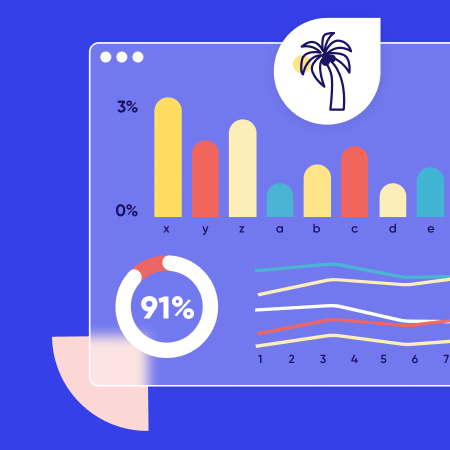
The Unknown Traveler
Insights and advice from ex-Forrester Analyst and VP of Marketing at Contentsquare, James McCormick.

According to ABTA, 49% of travelers said their holidays are more important to them now than before the pandemic. So how can businesses in the travel and hospitality industry meet customer demand and stay in tune with their ever-changing preferences?
The answer lies in customer experience data analytics.
Using big data and analytics, travel businesses can better understand the digital experiences delivered, and how and why users behave the way they do at each stage of their online journey. It’s the key ingredient to building a seamless customer experience, helping increase conversion and, ultimately, customer lifetime value (LTV).
In this blog, we discuss what data analytics means in the travel industry today and introduce three (very good) reasons why it should be on your radar in 2022.
The Unknown Traveler Insights and advice from ex-Forrester Analyst and VP of Marketing at Contentsquare, James McCormick.
Digital data analytics is used in the travel and hospitality industry to gain insights into customer behavior and preferences in order to optimize traveler experiences and gain a competitive advantage.
Advanced intelligence platforms such as digital experience analytics can help travel brands dive deeper into the wants, needs, and desires of their customers in real-time. This allows travel brands to get insight into visitor mindset, their intent, predict outcomes and take effective action with experiential changes.
If the above hasn’t already convinced you, here are our three top reasons why you should consider implementing digital experience analytics.
The habits and behaviors of travel consumers have changed so significantly that insights from previous years are no longer a sufficient indication of what their needs are in 2022. Even before the pandemic, for many travel brands, understanding travel consumer behavior was a challenge.
Tourism analytics tools solve this problem by gathering real-time visitor behavior data to provide insights into evolving customer preferences. This helps brands improve their customer experience and optimize products and services. In fact, using an advanced data analytics platform strategy is over 14 times more likely to drive better experiences than those with weak ones. They do this by bringing together multiple datasets such as visitor context, experience, and behavioral insights into a single platform.
You can find out how Carnival Cruises uses Contentsquare’s digital experience analytics platform to gain insights into customer pain points in our executive report.
With an average bounce rate of 42% across the industry, travelers’ demand for a seamless digital journey is sky-high. From browsing hotels and flights to check-in, travelers are looking for a smooth, frictionless experience. So, if a potential traveler engages with your brand digitally and happens to struggle, they’re likely to get frustrated and go to a competitor—potentially never to return again.
Tourism data analytics tools help travel brands understand where those customer pain points are, like whether they had issues confirming their booking or trouble checking in. But it’s important to note that few tools actually reveal the ‘why’ behind the struggle.
However, with advanced digital experience analytics, travel brands can proactively understand which pages, forms, or parts of the journey are working and which are not without having to wait on customer feedback. Not only does this allow you to optimize the experience but it also maximizes your potential to turn a visitor into a paying customer.
Take leading tourism and hospitality brand, Center Parcs, for example. They analyzed their digital customer behavior to inform a recent website redesign, which lead to a $22.5 million increase in annual revenue. Now that’s impressive!
2022 Travel Digital Experience Benchmark Report Get insights to deliver better, more human digital experiences.

Finally, travel brands can use big data to identify key areas they need to invest in and where they need to improve their products or services. It can also help identify what’s working to prioritize product requirements and manage your backlog proactively based on clear data—not reactively based on best guesses.
Advanced digital experience analytics platforms take this a step further by allowing you to prioritize product enhancements and innovations based on their quantifiable impact on key metrics (such as revenue and conversion).
Great Wolf Lodge is a perfect example of this. By using Contentsquare’s advanced behavioral analytics, they were able to redesign their website with data-driven insights, increasing revenue per visitor by 20%.
Get started on your data journey with Contentsquare’s digital experience analytics. Book a demo to find out how you can use advanced behavioral analytics to inspire your travel customers with online experiences that convert.